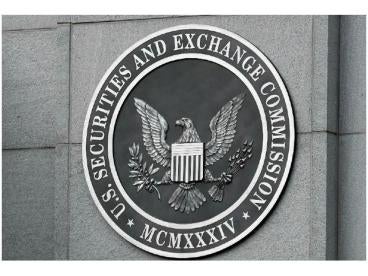Although the proposed listing standards could significantly reduce regulatory barriers, commissioner dissent in exchange-traded product order underscores regulatory concerns about novel products.
Two recent developments could have significant consequences for the exchange-traded fund (ETF) industry and the regulatory landscape for such products. The first development is a proposed rule change to create “generic listing standards” for actively managed ETFs. The second is the Securities and Exchange Commission’s (SEC’s) approval, accompanied by a dissenting opinion, of listing standards for a new type of “paired class” exchange-traded product (ETP). In addition, Commissioner Michael Piwowar’s recent comments that concerns about leveraged ETFs and volatility are overblown may be a signal that the SEC’s stance on such products could be softening. In this LawFlash, we discuss each of these developments and the practical implications they may have for industry participants.
NYSE Arca’s Proposal for Actively Managed ETFs
The SEC recently published a notice in the Federal Register requesting public comment on a proposed rule change from NYSE Arca, Inc. (NYSE Arca). As we discuss further below, the proposed change (Proposed Rule) would amend NYSE Arca Equities Rule 8.600 to adopt so-called “generic listing standards” (Listing Standards) for Managed Fund Shares. If approved, actively managed ETFs that meet the requirements of the Listing Standards would be able to list and trade their shares on the NYSE Arca without first having to seek separate approval from the SEC’s Division of Trading and Markets. Although actively managed ETFs would still be required to seek exemptive relief from the SEC, adopting the Listing Standards could significantly reduce the time required to launch active ETFs as well as the associated costs.
Under current regulations, before Managed Fund Shares can be listed and traded on an exchange, the exchange must first file a proposed rule change to list and trade shares of the fund and obtain an SEC approval order. This process is not required of passively managed, index-tracking ETFs that meet an exchange’s generic listing standards for such products. The current process to list shares of actively managed ETFs can be costly and time consuming, often taking several months or longer. Under the Proposed Rule, NYSE Arca would be able to list the Managed Fund Shares without seeking separate SEC approval, as long as the active ETF meets specified requirements. These requirements include specified portfolio standards, a requirement that the ETF have a stated investment objective that must be adhered to under normal market conditions, and a requirement that a Portfolio Indicative Value be widely disseminated every 15 seconds during the trading day.
The Proposed Rule also specifies requirements for an active ETF’s use of exchange-traded and over-the-counter derivatives. Although there would be no limitation imposed on the percentage of an active ETF’s portfolio that may be invested in derivatives (other than the normal 1940 Act requirements), 90% of the ETF’s holdings in futures and exchange-traded options (if any) would have to consist of options and futures whose principal market is a member of the Intermarket Surveillance Group or a market with which NYSE Arca has a comprehensive surveillance sharing agreement. In addition, the ETF would have to disclose on its website certain information regarding any investments in derivatives, including the derivative’s reference asset, a ticker symbol, the quantity held, a maturity date, a coupon rate, an effective date, and the market value and percentage weight of the holding in the portfolio. The manner in which the Proposed Rule would deal with derivatives is particularly relevant given the SEC’s historic concerns regarding derivative use by investment companies, including ETFs, and recent trends in ETF product development, which have seen increased focus on alternative investment strategies and the use of derivatives as ETF sponsors seek to differentiate their product offerings from lower fee, “plain vanilla” ETFs.
In soliciting comments on the Proposed Rule, the SEC appears to be particularly concerned with (1) whether the Listing Standards, which are in many ways similar to those required of index-based ETFs, are appropriate for active ETFs; (2) whether the Listing Standards are adequate to deter manipulation; and (3) whether the Listing Standards should restrict the amounts or types of short-term cash equivalents or derivative instruments that may be included in an active ETF’s portfolio. The SEC has requested that comments be submitted no later than March 31.
The SEC Approves New “Paired Class” ETP Structure
The SEC also recently issued an order approving NASDAQ Rule 5713 (Rule), a proposal from The NASDAQ Stock Market LLC (NASDAQ) to adopt listing standards for “Paired Class Shares” and to list and trade such shares issued by designated series of AccuShares Commodities Trust I (Trust). Unlike the proposed Listing Standards for Managed Fund Shares, which would apply to all qualifying active ETFs, the NASDAQ listing standards could only be used by the ETPs specified in the order. The SEC’s approval of the Rule was the object of a formal dissent by Commissioner Kara Stein, in which Commissioner Stein raised a number of concerns relating to ETPs. Although Commissioner Stein’s dissent relates specifically to the Paired Class Shares, her dissent underscores the scrutiny with which regulators have examined, and appear intent on continuing to examine, ETPs in general.
In early 2014, the Trust filed a registration statement under the Securities Act of 1933 to launch a suite of new ETPs (the Funds) designed to track underlying benchmarks representing commodity and volatility spot prices. However, unlike previous products that have attempted to track commodities and volatility by buying and rolling futures, the Funds use a “paired class” structure and are designed to hold only cash and cash equivalents.
The Funds’ paired class structure differs significantly from the structure used by more traditional ETPs. Each Fund will issue and redeem two share classes that trade separately on the NASDAQ: “Up Shares” and “Down Shares.” The performance of each share class moves in opposite directions. A Fund’s Up Shares are positively linked to its underlying index, while its Down Shares are negatively linked to its underlying index. Each class of shares has its own value (Class Value), which is based on the Fund’s assets attributable to that class. As the performance of a Fund’s underlying benchmark goes up or down, the amount of Fund assets attributed to each class also goes up or down, as applicable. For example, when the value of the underlying benchmark increases, there is a corresponding increase in the Class Value of the Up Shares and a corresponding decrease in the Class Value of the Down Shares. Conversely, when the value of the underlying index decreases, the Class Value of the Down Shares increases and there is a corresponding decrease in the value of the Up Shares. At specified, regular intervals, the Funds engage in distributions of cash to the shares of the class whose Class Value has increased. After such distributions, the Class Values for each class are reset. This constant counter positioning between the classes of Fund shares in a manner corresponding to the performance of a Fund’s underlying benchmark permits each Fund to operate without having any portfolio assets other than cash and cash equivalents.
On June 11, 2014, NASDAQ filed a proposed rule change with the SEC pursuant to Rule 19b-4 under the Exchange Act to add the Rule and to list the Up Shares and Down Shares issued by the Trust. On February 18, 2015, the SEC issued an order approving the Rule, thus allowing NASDAQ to list the Funds’ shares.
Commissioner Stein’s Dissent
In her dissenting statement, Commissioner Stein voiced concerns about the Funds’ operational complexity and potential impact on investors, noting that the SEC’s approval of such a novel product structure may be “premature.” She noted that because the Funds require shareholders to constantly monitor the value of the Funds’ shares, they can expose “even the most sophisticated investors to extreme risks.” Commissioner Stein also noted that, notwithstanding disclosure in the Trust’s registration statement that the Funds may not be suitable for all investors and that investments in the Funds may require active management and monitoring, retail investors may still be inclined to invest their money in the products. In support of her concerns, Commissioner Stein cited a number of enforcement actions that the Financial Industry Regulatory Authority (FINRA) has brought against brokers for recommending leveraged and inverse ETPs to retail customers for whom they were not suitable.
In addition to her concerns about the products’ potential impact on retail investors, Commissioner Stein expressed concern that it is unclear what impact such products may have on markets generally, especially if these types of products attract significant investment assets. Commissioner Stein emphasized the need for “a more thoughtful, transparent, and fulsome review process for these types of [products], even if it means disapproving proposed rule changes until we get comfortable with particularly risky and complex products,” and she further noted concern that “today’s approval now clears the path for copycat products to enter the market.”
Trends in Regulatory Focus on ETPs
Commissioner Stein has made other remarks that shed further light on the concerns outlined in her dissent. During a keynote address in November 2014, she cited the exemptive applications for novel, semitransparent actively managed exchange-traded managed funds that the SEC has recently considered, the increasing popularity of ETFs with retail and institutional investors, and the growing complexity of ETPs generally. In that November speech, Commissioner Stein also noted that although such products may represent significant cost savings to investors, questions regarding the risks that they may collectively pose to the market “are getting lost in the current ETF exemptive application and exchange listing process, where each product is considered independently.” She also noted that such risks may be enhanced with respect to ETPs not registered under the 1940 Act (such as the Funds) because such products can represent additional complexity without the overlay of the investment restrictions and shareholder protections imposed by the Investment Company Act. She concluded her November speech by mentioning that the SEC has a cross-divisional team that monitors the ETP industry and its broader market and systemic impacts.
In addition to the scrutiny from Commissioner Stein, ETFs—and, specifically, their pricing mechanism—have recently been under review by the Federal Reserve Bank of New York, which has reportedly contacted at least two authorized participant firms with concerns that prices of ETF units might significantly diverge from the value of their underlying holdings, especially where the ETF tracks less liquid assets or experiences heavy redemption requests. Here, the Federal Reserve Bank of New York appears to be concerned about the resilience of ETFs to sharp fluctuations in the underlying markets to which they seek to provide exposure.
There does not yet appear to be a consensus among regulators regarding nontraditional ETPs. A recent working paper by researchers at the Board of Governors of the Federal Reserve System (Federal Reserve Board) and Pennsylvania State University concluded that concerns of leveraged ETFs fueling sharp spikes in market volatility are “likely exaggerated.” This conclusion contrasts the heightened attention paid to leveraged ETFs from regulators for their complexity and associated risks, particularly with respect to market volatility, and also contrasts a July 2013 paper in which other economists at the Federal Reserve Board warned that leveraged ETFs could trigger a US stock market crash. Notably, SEC Commissioner Piwowar recently cited the working paper with approval in prepared remarks at the 2015 Investment Company Institute’s Mutual Funds and Investment Management Conference. In his remarks, Commissioner Piwowar stated “there is a false narrative about leveraged ETFs being spread by the prudential regulators. It is the unsubstantiated assertion that these products contribute to increased volatility in the financial markets . . . .” He further noted that concerns about volatility and leveraged ETFs “are overblown.”
Furthermore, nontransparent, actively managed ETF proposals have recently been the subject of a great deal of discussion throughout the industry and provide another example of the types of concerns being raised by the SEC. In November 2014, the SEC granted exemptive relief to permit the launch and operation of a new type of product, exchange-traded managed funds (ETMFs), which will use a “net asset value (NAV)–based trading” protocol where all bids, offers, and execution prices for an ETMF will be expressed as premiums or discounts to the ETMF’s next-determined NAV. The Notice for the Eaton Vance Order highlighted that because ETMF prices will be directly linked to NAV, ETMFs can be expected to trade at relatively narrow premiums/discounts to NAV, even in the absence of full portfolio transparency. Earlier in November, the SEC denied two proposals for nontransparent, actively managed ETFs, largely because they fell “far short of providing a suitable alternative to daily portfolio transparency.” Unlike ETMFs, these proposals sought to operate nontransparent ETFs based on the traditional ETF intraday trading and pricing approach, as opposed to the NAV-based trading used by ETMFs. The SEC stated that the proposals did not provide “an adequate substitute for portfolio transparency such that the proposed ETFs would consistently trade at or close to NAV.”
Practical Implications
The NYSE Arca’s Proposed Rule, if approved, could be a major development for ETF sponsors because it would significantly reduce the time and cost to market for active ETFs that meet its requirements. This could result in more new active ETFs entering the market. However, any significant limitation in the final Rule on a fund’s ability to use derivatives while relying on the Listing Standards could limit the utility of this Rule because novel products that make more significant use of derivatives, or that otherwise do not satisfy the Rule’s requirements, will still need to obtain individual listing orders.
The development of the AccuShares’ paired share class structure, the recent approval of ETMFs, and the filing of proposed Listing Standards for active ETFs indicate that product innovation continues to drive the ETP industry. We expect this trend to continue for several reasons. First, there has been a general trend in the investment industry for alternative products and strategies. Additionally, many investors find ETPs (in their various forms) to be compelling investment alternatives. Finally, as new sponsors try to enter this competitive marketplace, they will seek new structures and solutions to differentiate their product offerings. It is clear, however, that regulators are paying attention and that regulatory concerns will continue to significantly affect market development. Although the significance of Commissioner Stein’s dissent should not be overstated (because the Paired Class Shares are a unique structure that was ultimately approved), her dissent provides useful insight into the concerns that have recently been raised by regulators about ETPs and will likely be areas of continued focus. Commissioner Piwowar’s comments may signal a potential thaw in the SEC’s otherwise largely negative views on leveraged and inverse ETFs. Industry participants should continue to monitor these developments and keep them in mind as they plan their business strategies.




 i
i

